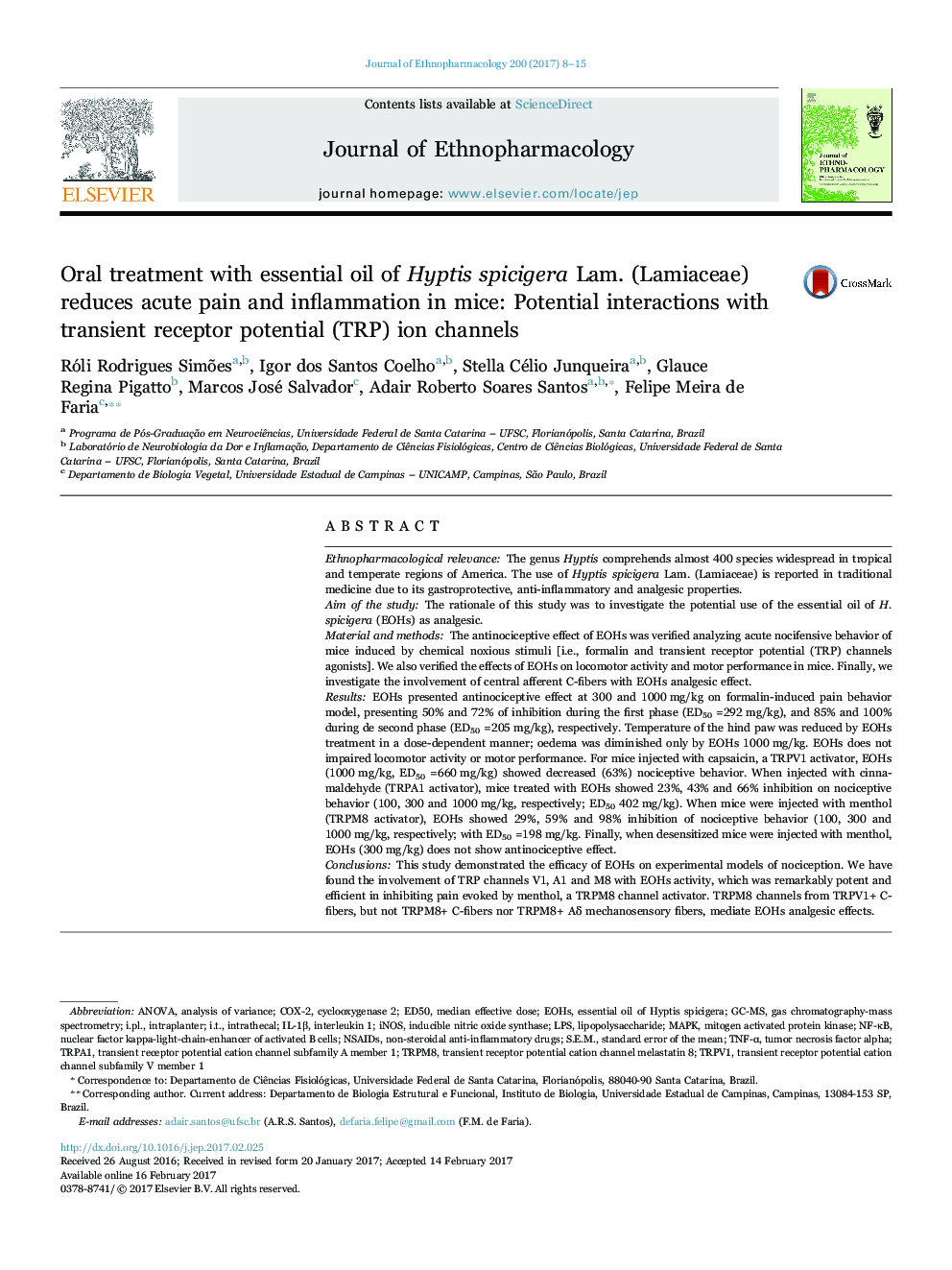| کد مقاله | کد نشریه | سال انتشار | مقاله انگلیسی | نسخه تمام متن |
|---|---|---|---|---|
| 5556162 | 1560362 | 2017 | 8 صفحه PDF | دانلود رایگان |

Ethnopharmacological relevanceThe genus Hyptis comprehends almost 400 species widespread in tropical and temperate regions of America. The use of Hyptis spicigera Lam. (Lamiaceae) is reported in traditional medicine due to its gastroprotective, anti-inflammatory and analgesic properties.Aim of the studyThe rationale of this study was to investigate the potential use of the essential oil of H. spicigera (EOHs) as analgesic.Material and methodsThe antinociceptive effect of EOHs was verified analyzing acute nocifensive behavior of mice induced by chemical noxious stimuli [i.e., formalin and transient receptor potential (TRP) channels agonists]. We also verified the effects of EOHs on locomotor activity and motor performance in mice. Finally, we investigate the involvement of central afferent C-fibers with EOHs analgesic effect.ResultsEOHs presented antinociceptive effect at 300 and 1000 mg/kg on formalin-induced pain behavior model, presenting 50% and 72% of inhibition during the first phase (ED50 =292 mg/kg), and 85% and 100% during de second phase (ED50 =205 mg/kg), respectively. Temperature of the hind paw was reduced by EOHs treatment in a dose-dependent manner; oedema was diminished only by EOHs 1000 mg/kg. EOHs does not impaired locomotor activity or motor performance. For mice injected with capsaicin, a TRPV1 activator, EOHs (1000 mg/kg, ED50 =660 mg/kg) showed decreased (63%) nociceptive behavior. When injected with cinnamaldehyde (TRPA1 activator), mice treated with EOHs showed 23%, 43% and 66% inhibition on nociceptive behavior (100, 300 and 1000 mg/kg, respectively; ED50 402 mg/kg). When mice were injected with menthol (TRPM8 activator), EOHs showed 29%, 59% and 98% inhibition of nociceptive behavior (100, 300 and 1000 mg/kg, respectively; with ED50 =198 mg/kg. Finally, when desensitized mice were injected with menthol, EOHs (300 mg/kg) does not show antinociceptive effect.ConclusionsThis study demonstrated the efficacy of EOHs on experimental models of nociception. We have found the involvement of TRP channels V1, A1 and M8 with EOHs activity, which was remarkably potent and efficient in inhibiting pain evoked by menthol, a TRPM8 channel activator. TRPM8 channels from TRPV1+ C-fibers, but not TRPM8+ C-fibers nor TRPM8+ Aδ mechanosensory fibers, mediate EOHs analgesic effects.
145
Journal: Journal of Ethnopharmacology - Volume 200, 22 March 2017, Pages 8-15